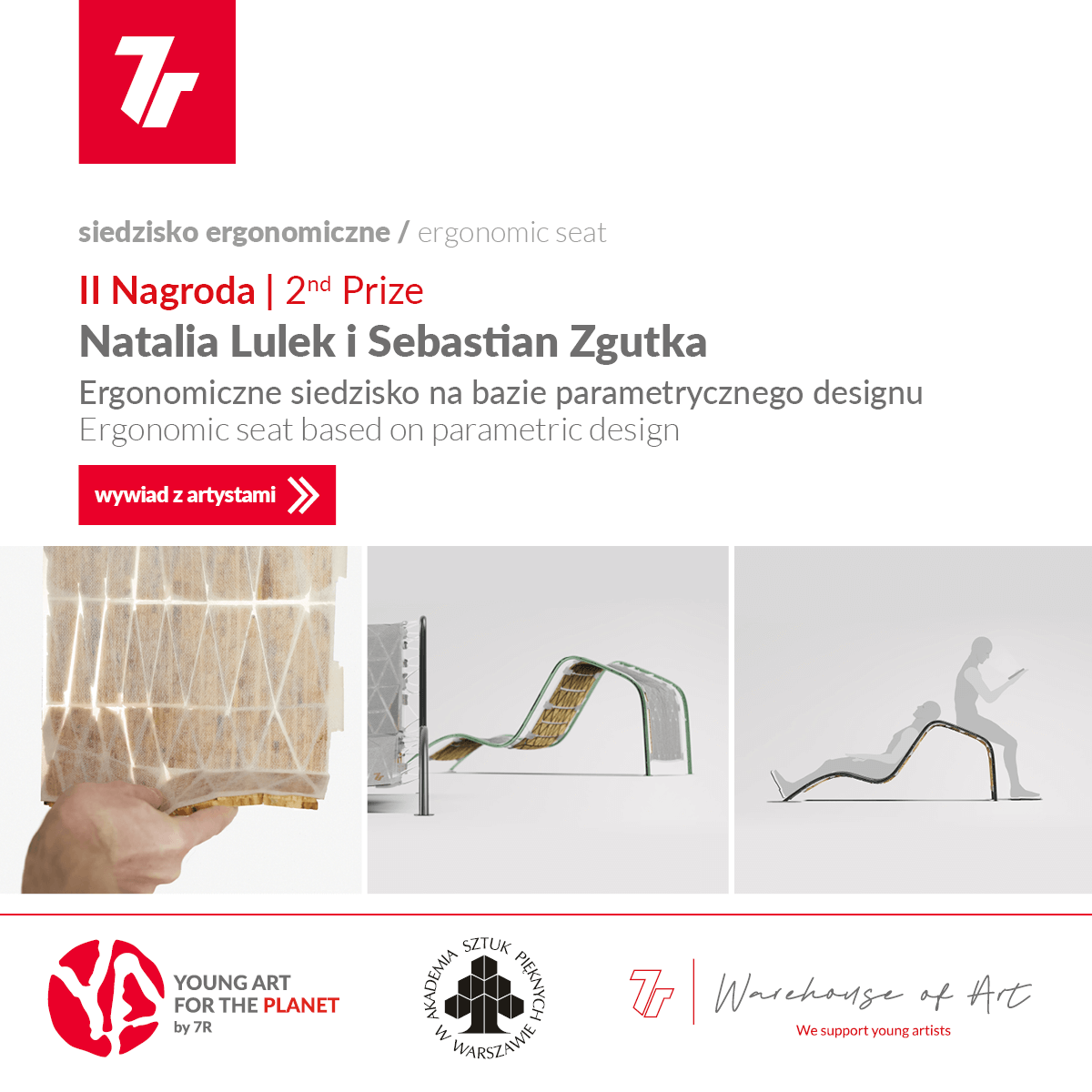From cradle to cradle bypassing the garbage

“Artists can design according to the principles of C2C or cradle to cradle. The idea is that the products we create return to their original state so that its lifecycle is part of a closed loop and so that it does not become rubbish,” claim Natalia Lulek and Sebastian Zgutka, the second-prize winners in the Ergonomic Seating section of the 7R Warehouse of art ‘Young art for the planet’ competition.
Where did you come up with the inspiration behind your competition entry entitled ‘Ergonomic seating based on parametric design’?
Sebastian Zgutka: We were inspired by a fabric with wooden elements that was once used by another artist. It was the collision of the human world where we used geometric forms with the biomorphic world, which is characterised by softness. This is how we created a material that combines fabric with bamboo.
Natalia Lulek: What most fascinated us was the flexibility of this material and ergonomics requires a material that can be shaped to the human body.
Sebastian Zgutka: We also spent time studying the imprints of our own bodies and the differences between them. We also made use of specialist software to optimise the design. For this we used the Delauney triangulation to optimise a network of triangles.
Natalia Lulek: A parametrically designed network of bamboo triangles can be used to fit the material to the body. The form of the seating results from the way the human body is built. You can lounge on this piece of furniture in various positions and the seating will change its form to match the person. There are two places to sit, one half upright and one lying back. Combining bamboo triangles with hotmelt fabric creates a soft but firm seat. Glued bamboo is an ecological and natural material that is quickly renewed and the triangles are cut out in a single process without excessive waste.
How important a role does nature and the natural environment play in your work?
Natalia Lulek: Sometimes I turn to nature but it isn’t my only source of inspiration. I am particularly interested in psychological and educational motifs.
Sebastian Zgutka: It depends. Nature sometimes plays a greater and sometimes a lesser role in my work. For example I am interested in bio-mimicry.
How can an artist influence the way people think about caring for the planet?
Sebastian Zgutka: They can at least design using the C2C or cradle to cradle principles. The idea is that the products we create return to their original state so that its lifecycle is part of a closed loop and so that it does not become rubbish.
Natalia Lulek: Maybe what I am about to say will seem a little controversial, but designers can distance themselves from capitalism when they work. What I am thinking about is that designers shouldn’t design things that will become rubbish in one, two or three years and will have to be replaced. Among all species, human beings have the greatest impact on the planet. If we start to design responsibly, there is a chance that things will change for the better.
Is the environment an important part of your everyday lives?
Natalia Lulek: I haven’t eaten meat for the last seven years and I try to limit the amount of clothes I buy. In the future I want to leave behind fast fashion and become a vegan.
Sebastian Zgutka: Personally, I am inspired by what Victor Papanek did in the 70s. His work was ridiculed at first and was underrated but over time it has become part of the canon of responsible design. He was called the ‘Trash designer’ because he attempted to recycle things, the lives of which had, according to common opinion at least, come to an end.
About Warehouse of Art
The 7R Warehouse of art ‘Young art for the planet’ competition was open to students and graduates of Warsaw’s Academy of Fine Arts. Its guiding motto was “Technology, Ecology, People, Coexistence”. The competition requirement was to create a project of utility art with an ecological theme in one of three categories: Ergonomic seating, murals on the side of a fire water tank and an ecological 7R gadget. In total, 26 entries were submitted. The awarded projects are available at 7rwarehouseofart.pl.






